
Get Free quotes from loft conversion specialists near you

Save money by comparing quotes and choosing the most competitive offer

The service is 100% free and with no obligation
- GreenMatch
- Insulation
- Insulation Grants
- Wall Insulation Grants
Wall Insulation Grants: Eligibility, Schemes and Types
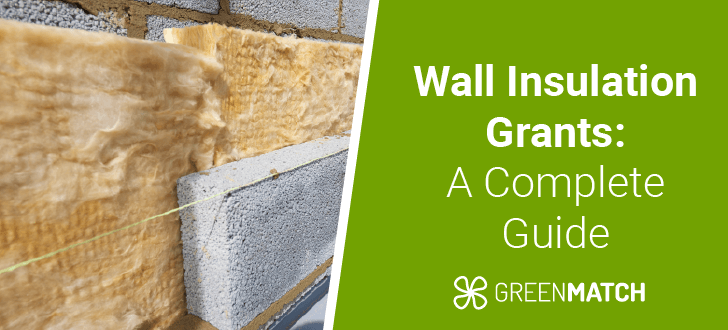
- Uninsulated walls account for up to 33% of total heat loss in a home.
- The two schemes in the UK providing free wall insulation grants are the Great British Insulation Scheme (GBIS) and the Energy Company Obligation (ECO4).
- Both nationwide schemes are active until March 2026.
Wall insulation is considered one of the most eco-friendly and energy-efficient home upgrades you could undertake. Alongside reducing your home's heat loss by up to one-third, proper wall insulation can cut your domestic carbon footprint by up to 1.1 tonnes annually, and bring about annual energy bill savings of up to £405 in a standard detached UK home.
However, not everyone can afford the high price tag of wall insulation in one go, leading to drafty, damp, and unhealthy homes. Luckily, the UK government has initiated two grant schemes - the Great British Insulation Scheme (GBIS) and the Energy Company Obligation (ECO4) - to help facilitate insulation upgrades for fuel-poor and energy-inefficient homes nationwide.
By qualifying for insulation grants, households can receive free or heavily discounted cavity walls, internal walls, and external wall insulation depending on their property type and condition. This GreenMatch UK guide will give you everything you need to know about available grants, their eligibility requirements, and how you can apply today.
Ready to insulate your walls? Let GreenMatch UK take care of the pesky researching and vetting of installers. Instead of spending countless hours hunting for the right company, you can just spend 30 seconds filling out our online form to receive up to 3 free home-tailored quotes from our wide-spanning network of accredited installers. Click below to begin!
- Describe your needs
- Get free quotes
- Choose the best offer
It only takes 30 seconds



Who is eligible for wall insulation grants?

Those eligible for wall insulation grants need to satisfy two main considerations; the qualification criteria of the grant scheme they apply to, and being a resident of a property that is suitable for wall insulation.
In the UK, there are currently two main nationwide grant schemes that are offering wall insulation grants. These are the Great British Insulation Scheme (GBIS) and the Energy Company Obligation (ECO4).
Generally, both the ECO4 and GBIS scheme complement each other, aiming to provide domestic upgrades to fuel-poor and energy-inefficient households. Both schemes have similar qualification criteria but can differ slightly from case to case.
Here is a breakdown of who can get wall insulation grants:
- Property ownership: To be able to apply for a grant scheme, you must be a homeowner, or renting from a private landlord. In the latter case, you will likely need permission from your landlord to apply for a grant scheme. This also applies to social housing cases. A landlord insulation grant may have slightly different qualification criteria.
- Household income: Both schemes prioritise households that are classed as the Low Income Group in the UK. This generally means your gross annual household income is less than £31,000.
- Home EPC rating: An Energy Performance Certificate (EPC) rating tells you the energy efficiency of your home. The assessment is graded from A (very efficient) to G (very inefficient). Homes with an EPC rating below D (homeowners) or E (home renters) are generally able to qualify for assistance.
- Council tax bands: Calculated based on your property value, council tax bands determine how much council tax you pay. Households in bands A - D for England, or A - E for Scotland and Wales, can qualify for free wall insulation through a grant scheme.
- Government benefits: Recipients of certain government assistance programs, benefits, and allowances are highly likely to qualify for assistance from a grant scheme. There are recognised benefits that class a recipient of the Low-Income group in the UK, making them eligible for government assistance.
The current list of approved government benefits and allowances that are recognised by both schemes are those classed as Low-Income Group assistance. These benefits are as follows:
- Child Benefit
- Pension Guarantee Credit
- Income-related Employment and Support Allowance
- Income-based Jobseeker's Allowance
- Income Support
- Tax Credits (Child Tax Credits and Working Tax Credits)
- Universal Credit
- Housing Benefit
- Pension Credit Saving Credit
Pensioners can qualify for free wall insulation even if they don’t meet all the requirements above. While age alone isn’t a qualifying factor, pensioners can benefit from a scheme if they’re part of the Low Income Group or General Group:
- Recipient of a means-tested benefit (e.g. Pension Credit Guarantee).
- A home EPC rating below D (homeowners) or E (home renters).
- An annual gross income below £31,000.
- A social housing resident vulnerable to the cold (age can be a factor).
- Within council tax bands A – D (England) or A – E (Scotland & Wales).
- Resident with a medical diagnosis that can be exasperated by poor insulation.
- Resident with a child aged under 5, or a resident over the age of 65.
If you don’t meet any of the mentioned criteria, hope is not lost! Households that don't qualify for standard eligibility might still benefit from support under the Local Authority Flex (ECO4).
This is a household referral mechanism that allows your Local Authority (LA) or Devolved Administration (DA) to make a case for you if they consider you particularly vulnerable to the effects of a cold home, or that you should be considered a fuel-poor, low-income household.
To learn more about the Local Authority Flex, or either scheme, visit the official UK government website or contact your energy provider.
Which schemes offer wall insulation grants?
Both the Great British Insulation Scheme and the Energy Company Obligation (ECO4) scheme provide a series of wall insulation grants for qualifying households. Both schemes are set to remain active until March 2026.
Regarding wall insulation, both schemes currently provide:
- Cavity wall insulation grants
- Solid wall insulation grants
- Internal wall insulation grants
- External wall insulation grants
Each scheme also differs in how it operates and assists qualifying households:
- The Great British Insulation Scheme (GBIS) delivers a single insulation measure per qualifying household. The chosen upgrade is decided after a retrofitting assessment to check which insulation measure is most effective for your property.
- The Energy Company Obligation (ECO4) takes a more whole-house approach to domestic upgrades, providing insulation measures, but also energy system repairs, upgrades, central heating and much more. ECO4 also places direct responsibility on your energy provider to assist in home upgrades.
Depending on your circumstances, you may receive full coverage for an insulation project, or you may be expected to partially contribute to the financing. This is determined by your annual gross income, job complexity, chosen installer, and many other factors.
Cavity wall insulation grants
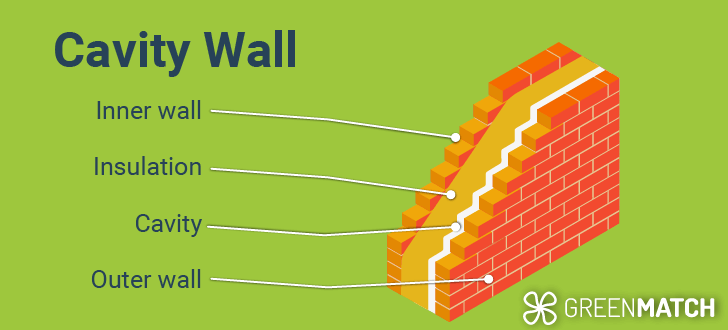
According to statistics provided by the UK House of Commons, cavity walls comprise up to 71% of all properties throughout the UK, yet up to one-third of these properties still lack adequate cavity wall insulation.
Luckily, both the ECO4 and GBIS scheme provide qualifying homes with grants for free and discounted cavity wall insulation.
What is cavity wall insulation?
Unlike solid walls, cavity walls are made up of a concrete inner wall, and a brick outer wall with an air space or ‘cavity’ in between, usually 50mm or more in width. Some older properties may have a cavity space exceeding 100mm, but this is increasingly uncommon.
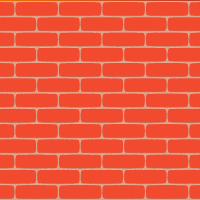
Cavity walls can be identified by the brickwork pattern of the outer wall. If the bricks are symmetrical, evenly spaced and horizontally laid, chances are you’ve got a cavity wall.
A government-approved professional installer can only carry out cavity wall insulation if you seek grant coverage. It’s not a job that can be handled DIY as it involves complex installation and industry-specific equipment.
You need to meet the right suitability conditions to insulate a cavity wall. This includes:
- Existing damage: Addressing any defects to the walls, or persistent issues with dampness and mould is important. This is to make sure any issues that can compromise the effectiveness or longevity of your insulation are solved before an installation.
- Accessibility: Ensuring that the cavity space is clean of debris and unobstructed is required to ensure your insulation is effective. This can also involve relocating wires, cables, or pipes that run through the cavity space.
These issues can be identified and solved by conducting a house assessment with an accredited installer. Once solved, you can apply for grants for cavity wall insulation.
What are the potential savings from installing cavity wall insulation?
Uninsulated walls account for a staggering 33% of heat loss in a home, making wall insulation the most effective home measure to slash energy bills and reduce domestic carbon emissions.
Here’s a breakdown of the cost of insulation for cavity walls per property type, as well as how much energy bill savings and carbon reductions you could expect:
| Property type | Installation costs (£) | Energy bill savings (£/year) | CO2 savings (kgCO2/year) |
|---|---|---|---|
| Flat/Apartment | £1,000 | £110 | 305 |
| Mid Terrace home | £1,500 | £140 | 385 |
| Detached bungalow | £2,100 | £175 | 485 |
| Semi-detached home | £2,700 | £235 | 650 |
| Detached home | £4,600 | £405 | 1,100 |
In addition to impressive annual savings on your energy bills and carbon footprint, proper wall insulation comes with a whole host of benefits for your home and livelihood:
- Environmentally friendly: An insulated home retains internal temperature better. As a result, your heating system doesn’t work as much to maintain indoor heat, saving you money and reducing your environmental impact.
- Healthier home: Uninsulated homes suffer from excess moisture, draught, and mould buildup, all of which harm your home's structural integrity and your health. Mould is a key cause of respiratory illnesses like asthma. Wall insulation reduces indoor moisture and draught, stopping mould growth and promoting a healthy indoor environment.
- Low maintenance: Wall insulation is one of the least testing insulation upgrades you could install. With a lifespan of up to 25 years, wall insulation hardly ever needs maintenance if installed properly.
- Quick payback: Despite what may seem like high upfront costs, the sky-high savings from proper wall insulation means that in most cases, you can pay off your investment in just around 10 years; an impressive time for such a large job.
With all things considered, wall insulation is a high-value home upgrade that improves your savings, home environment, and personal health, all while taking better care of the planet.
Solid wall insulation grants
Solid walls are far more common in pre-1920s structures throughout the UK and are no longer as commonly found. Despite making up less than 30% of UK properties, a shocking 97% of all solid wall properties lack adequate insulation.
Luckily, both the Great British Insulation Scheme (GBIS) and the Energy Company Obligation (ECO4) provide full or partial cost coverage through solid wall insulation grants, based on your qualifications.
What is solid wall insulation?

Solid walls consist of a single-layer wall with no cavity space in between. These walls can also be identified by their brickwork. Usually, the bricks will be less symmetrical and contain a mix of both lengthway and widthway bricks.
Since there is no cavity space in solid walls, they can only be insulated either internally or externally from the property. Each approach has its associated costs and complexities.
Internal wall insulation
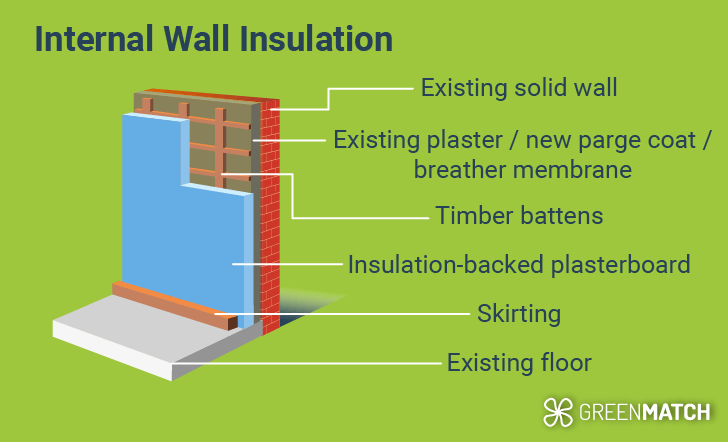
Internal wall insulation typically costs around £7,500 for a standard 3-bedroom semi-detached home in the UK and involves fitting insulation material onto the inside walls of your property.
This could be done either by securing insulation (such as rigid boards) directly onto your walls and covering them with plaster or by building stud walls and filling them with material such as mineral wool instead.
In both cases, internal wall insulation still takes place on the inside of the house. As a result, it’s quite a messy and disruptive process, so it may be wise to undergo internal wall insulation room by room, or temporarily relocate during the process.
Internal wall insulation grants can help reduce, or completely cover your investment costs, thus making this a worthy investment for your home.
External wall insulation
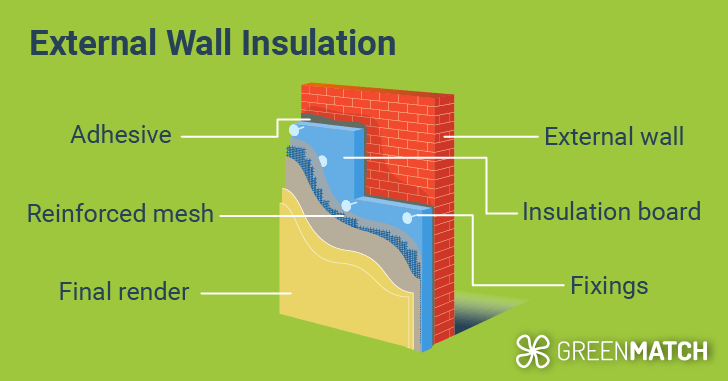
External wall insulation costs around £12,000 for a typical 3-bedroom semi-detached UK home and involves attaching insulation material directly to the outer walls of your property. External wall insulation grants can greatly help manage this cost through partial or full cost coverage.
Normally, rigid insulation sheets such as PIR boards are secured to your home's outer facade before being covered in render (e.g. plasterboard) and cladding for a clean finish. As a result, the outer facade of your property will be altered, but this does allow you to redesign your home appearance as you wish.
What are the potential savings from installing solid wall insulation?
Solid wall insulation is a very effective way to improve your home's heat retention, protect your savings, and upgrade your property's energy efficiency.
Here’s a breakdown of the potential energy bill savings and carbon footprint reductions you could expect with solid wall insulation (internal and external):
| Property type | Energy bill savings (£/year) | CO2 savings (kgCO2/year) |
|---|---|---|
| Flat/Apartment | £150 | 415 |
| Mid Terrace home | £185 | 520 |
| Detached bungalow | £240 | 660 |
| Semi-detached home | £315 | 880 |
| Detached home | £550 | 1,500 |
Keep in mind that these costs and savings are market estimates based on fuel and property prices. For a more detailed and tailor-made quote price, it’s important to consult with professional installers.
Finding a trustworthy installer with the best bargain for your home is no easy task. Most prospective customers find themselves stuck in countless hours of researching and vetting, with no solution in sight. That’s where GreenMatch UK comes in!
By filling out our simple 30-second form, you can access up to 3 free home-tailored quotes from our nationwide network of trusted accredited installers. The best part? Our services are completely free and without any obligation to follow through. Save yourself the time, money, and headache of personal vetting. Click below to begin!
- Describe your needs
- Get free quotes
- Choose the best offer
It only takes 30 seconds



FAQ
You can get a grant to insulate your walls through two key schemes: the Great British Insulation Scheme (GBIS), or the Energy Company Obligation (ECO4) scheme. Both initiatives offer comprehensive wall insulation grants, including cavity, external and internal wall insulation. Depending on your qualifications, you can get partial or full-cost coverage.
Pensioners can get a grant for wall insulation if they qualify as part of either of two-income groups: the Low Income Group, or the General Group. Both groups require a certain set of criteria to be met.
Alternatively, the ECO4 scheme has a Local Authority Flex initiative in which a case could be made about your qualification if you do not meet the criteria but believe you should be considered.
External wall insulation is one of the most effective home efficiency upgrades anyone can implement. It can cut your home’s heat loss by up to 33%, leading to staggering energy bill savings of up to £550, and CO2 cuts of up to 1.5 tonnes in a standard detached UK home.
We strive to connect our customers with the right product and supplier. Would you like to be part of GreenMatch?

